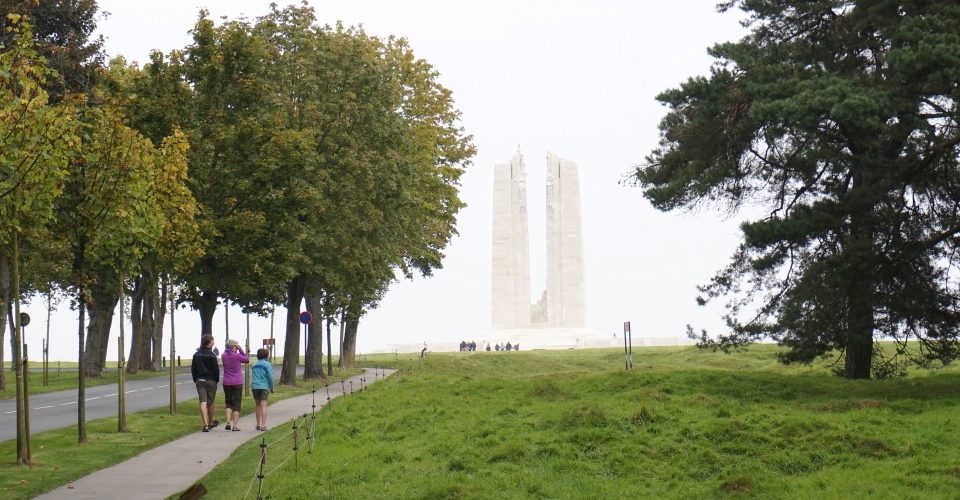We have to admit, this is a challenging idea for a blog series: a year around the world, learning about how other countries are dealing with environmental and sustainability issues, and making connections to what we can do in Canada. It should be an interesting series as Chris Winter, a 30-year veteran of the environmental movement, posts his observations as he and his family travel from Europe to Asia and Australia.
We have to admit, this is a challenging idea for a blog series: a year around the world, learning about how other countries are dealing with environmental and sustainability issues, and making connections to what we can do in Canada. It should be an interesting series as Chris Winter, a 30-year veteran of the environmental movement, posts his observations as he and his family travel from Europe to Asia and Australia. The underlying theme is the culture of change, and to ask whether we in Canada truly have the right approach to tackling the environmental and economic challenges that lie ahead. First up: reflections on war and power.
It’s mid-September, 2014. We’ve been driving the North of France with Eminem’s new single, “Guts over Fear” in never ending rotation on French radio. Our theme over the past week has been the great wars, which makes it an appropriate anthem. Much better than “Gigo, gigo, gigotez,” the French version of one of the many songs reflecting pop culture’s newfound fascination with butt wiggling and which leave you wondering what all the sacrifice was for.
This is the Canadian pilgrimage, first to Vimy, then to Juno. It’s a fitting start to a world tour, a chance to reflect on power, freedom and sacrifice.
Vimy Ridge is embedded in our national lore as the time when the Dominion of Canada truly became a nation. Oddly enough, for the French, it’s a tiny point on the map and even tinier in their collective consciousness. Hardly anyone knew where it was outside of the locals.
Our base for Vimy was in the town of Villers Chatel, where we stayed at a four-century-old farmhouse with our hosts, Michel and Elizabeth. There we also met Andre Imbeau, a former Quebecer now living in France. They loaned us bikes, drew up a backroads route on a map, and the next day we cycled the eighteen kilometres to the Vimy memorial past sugar beet farms and through tiny villages.
Our introduction to Vimy was truly Canadian. As we cycled into the visitors centre, we were told to get off our bikes and walk them to the bike rack at the far end of the parking lot. We felt at home!
It takes ten minutes to walk to the memorial, along a pock-marked young forest, grazed by a herd of sheep and fenced off to humans because of potential mines. Even a century later, you can sense how difficult each yard of ground would have been to gain. 3,598 dead and 7,004 wounded.
Photo by Chris Winter.
The memorial itself is stunning, white limestone imported from Croatia in two towers rising above the ridge. From the edge of the memorial, the view of the valley towards Lille makes it all too clear why, in the time of World War I, Vimy Ridge would be so important. A world war fought almost entirely across a stretch of several hundred kilometres, trench to trench, hole to hole.
From Vimy, to the World War II museum at Caen, the Canadian memorial at Juno Beach and the Canadian cemetery at Reviers. 359 Canadians died on the first day of Juno Beach, June 6, 1944, 5,500 in the 100 days of the Battle of Normandy and 45,000 during the Second World War. The town of Caen itself was heavily damaged in the ensuing battle and 1,500 civilians were killed from allied bombing and street warfare.
These days, the region plays host to an invasion of tourists; a steady stream of the war-wise and wide-eyed innocents. There are the inevitable questions we ask ourselves each year on Remembrance Day: How did we let this happen? What have we learned? Can it happen again? Somehow, these questions are never answered to our satisfaction.
War is the conflict resulting from an ego gone wild, whether personal or societal. Mad dreams can be held equally by individuals, countries, companies, religions or ideologies. To succeed, they need power, and the acquisition of power usually involves the subjugation of others. Monarchy, religious edicts, political ideology, slavery and modern-day economics are all based on the centralization of power within a ruling elite. It is part of the human condition – we are social animals with a need to establish hierarchy and power. War is the failure to contain greed.
Juno Beach Centre, Canada’s Second World War museum. Photo by Chris Winter.
Two screens alternate between East and West propaganda during the cold war years. Laughably obvious now, but you can imagine how believable it was at the time. Laughable, until you realize it is still going on.
If you visit the war museum in Caen, be sure to see the cold war exhibit, where two screens alternate between East and West propaganda during the cold war years. Laughably obvious now, on both sides, but you can imagine how believable it was at the time. Laughable, until you realize it is still going on.
Today’s propaganda reflects today’s wars over ideology, religion and resources. We pride ourselves on the checks and balances that we now have in place with democracy and a market economy, but that only means that the rules of the game have changed. The game is still the same.
Politics in Canada is an exercise in power. Each party vies for public support and the ability to wield power through a majority government. The result is that elections are less about public service and more about marketing.
At the same time, our federal government is clamping down on the ability of Canadian charities to speak out in the public’s interest. They tell us that politics is for politicians, and charities should only be involved in social service. Nothing could be further from the public interest. Charities should have free rein to comment on politics, for their social mandates make them far more credible than the ideology that lies behind politics. It makes for a robust system and provides an essential check to the ego and power of politics.
If the price of freedom is eternal vigilance, then Remembrance Day is an opportunity to remember that greed and the abuse of power is ever-present.
The economic war is more pervasive. As John Perkins describes in “Confessions of an Economic Hitman,” the tools of global domination have shifted from the military to economics. What could not be achieved with weapons has been achieved through economics. Just recently the New York Times obtained a tape of a speech by Richard Berman, CEO of Berman and Company, where he advised energy executives that they were in “an endless war” that they could either “win ugly or lose pretty.” Berman was seeking $3 million for a propaganda campaign called Big Green Radicals.
If the price of freedom is eternal vigilance, then Remembrance Day is an opportunity to remember that greed and the abuse of power is ever-present. Let us recognize that the front lines of freedom and democracy have shifted, and give thanks to those who are battling to maintain the balance.
Bény-sur-Mer Canadian War Cemetery in Reviers, France. Photo by Chris Winter.
The former executive director of the Conservation Council of Ontario, Chris has started a new initiative to help Canada transition to a sustainable future by “living better with less,” Canada Conserves. After 30 years in the environmental movement, Chris Winter is on a well-deserved round-the-world sabbatical with his family. Along the way, Chris will be sharing examples of how other countries are dealing with climate change, resource scarcity and economic turmoil. Follow him on Twitter or Facebook. You can also follow the family’s Hello Cool World tour blog.













